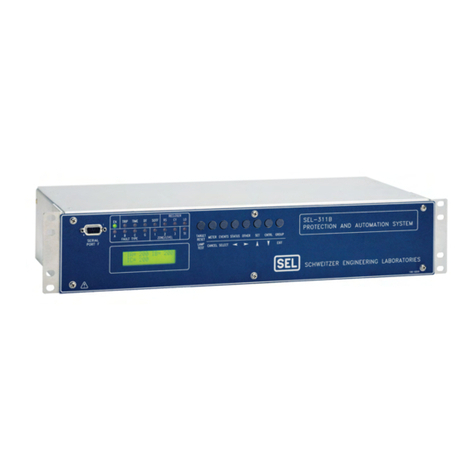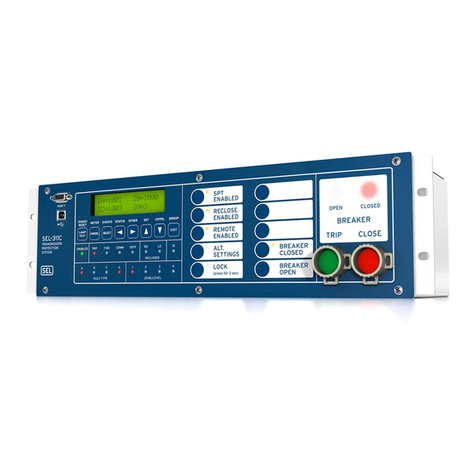
!
CAUTION: The relay contains devices sensitive to
electrostatic discharge (ESD). When working on
the relay with front or top cover removed, work
surfaces and personnel must be properly grounded
or equipment damage may result.
!
ATTENTION: Le relais contient des pièces
sensibles aux décharges électrostatiques (DES).
Quand on travaille sur le relais avec le panneau
avant ou du dessus enlevé, les surfaces de travail et
le personnel doivent être mis à la terre
convenablement pour éviter les dommages à
l'équipement.
!
CAUTION: There is danger of explosion if the
battery is incorrectly replaced. Replace only with
Ray-O-Vac®no. BR2335 or equivalent
recommended by manufacturer. Dispose of used
batteries according to the manufacturer’s
instructions.
!
ATTENTION: Il y a un danger d’explosion si la
pile électrique n’est pas correctement remplacée.
Utiliser exclusivement Ray-O-Vac®No. BR2335 ou
un équivalent recommandé par le fabricant. Se
débarrasser des piles usagées suivant les
instructions du fabricant.
!
WARNING: This device is shipped with default
passwords. Default passwords should be changed
to private passwords at installation. Failure to
change each default password to a private password
may allow unauthorized access. SEL shall not be
responsible for any damage resulting from
unauthorized access.
!
AVERTISSEMENT: Cet équipement est expédié
avec des mots de passe par défaut. A l'installation,
les mots de passe par défaut devront être changés
pour des mots de passe confidentiels. Dans le cas
contraire, un accès non-autorisé à l'équipement
pourrait être possible. SEL décline toute
responsabilité pour tout dommage résultant de cet
accès non-autorisé.
!
DANGER: Removal of this front panel exposes
circuitry which may cause electrical shock that can
result in injury or death.
!
DANGER:Le retrait du panneau avant expose à la
circuiterie qui pourrait être la source de chocs
électriques pouvant entraîner des blessures ou la
mort.
The software (firmware), schematic drawings, relay commands, and relay messages are copyright protected by the United States Copyright Law and International Treaty
provisions. ll rights are reserved.
You may not copy, alter, disassemble, or reverse-engineer the software. You may not provide the software to any third party.
ll brand or product names appearing in this document are the trademark or registered trademark of their respective holders.
Schweitzer Engineering Laboratories, SELOGIC, Connectorized, Job Done, SEL-PROFILE, and are registered trademarks of Schweitzer Engineering Laboratories.
The English language manual is the only approved SEL manual.
Copyright © SEL 2001 ( ll rights reserved) Printed in US .
This product is covered by U.S. Patent Numbers: 5,041,737; 5,208,545; 5,317,472; 5,325,061; 5,349,490; 5,365,396; 5,367,426; 5,479,315; 5,515,227; 5,652,688;
5,694,281; 5,703,745; 5,731,943; 5,790,418; 5,793,750; 5,883,578; 6,028,754: U.S. Patent(s) Pending, and Foreign Patent(s) Granted and Pending.
This product is covered by the standard SEL 10-year warranty. For warranty details, visit www.selinc.com or contact your customer service representative.





























